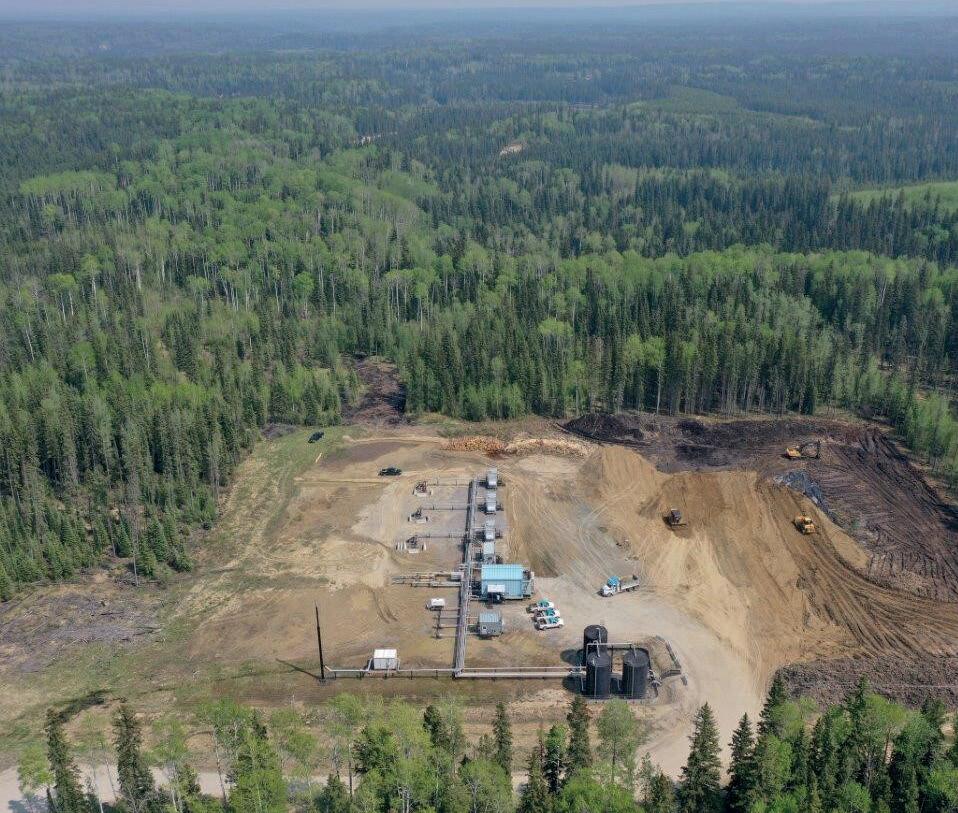
3 minute read
Land
Development
We endeavour to use existing roads, well sites, pipelines and facilities, previously constructed by other operators, or by other industries. This approach is good business as it minimizes our environmental footprint, accelerates the pace of development and reduces costs.
Advertisement
Westbrick uses multi-well pads which greatly reduces surface disturbances – roads, pipelines, facilities and traffic. A six two mile horizontal well pad replaces 16 vertical wellsites for the same reservoir development. Costs are lower, wells come on stream earlier and we are only using 6 acres of land for a 2560 acre development or 0.23%.
Before starting construction at a well site, we carry out a thorough pre-site survey which includes a wildlife survey. Westbrick plans and responds accordingly to reduce the impact of our drilling operations on the environment.
Production
At Westbrick, we design our wells, pipelines and facilities to minimize the risk of failure. We have processes to minimize accidents and empower our team to react very quickly in the unlikely event of a spill. Any spill is bad for our business and can equate to potential
$733,000 BUDGETED TO FULFIL ASSET RETIREMENT OBLIGATIONS (ARO) environmental impact and a reduction in operating efficiency and profit.
Our Integrity Program has been developed to continually plan, design, check, improve and monitor our operations to identify and communicate potential risks and hazards. Through safety training and competency courses, including AER Industry Training Sessions, we foster a culture of shared accountability where every team member is expected to take responsibility for their own actions and the team’s overall success.
As a result of our management procedures, including emergency response exercises, regulatory reportable spills are rare, with an average of less than one per year occurring during the last four years and with none occurring in 2020. This year, we identified two nonreportable spills, and we immediately mobilized to minimize the spill volume and clean-up the affected area.
Delaying construction for wildlife
When we carried out a wildlife assessment for our 16-7 pad, we discovered a pair of nesting killdeer. To avoid disturbing the nest, we postponed our construction activities while we waited for the eggs to hatch and fly the nest.
Abandonment
Westbrick completed seven wellbore abandonments by the end of 2020. When a well reaches the end of its productive life and is abandoned, the next step is to commence surface reclamation activities to return the well site to its equivalent land use capability. Westbrick also carried out 10 Phase I Environmental Site Assessments this year. Following these assessments, we can initiate the remediation and reclamation process in 2021. This process is guided by our Closure Framework
Since inception, Westbrick has operated with a healthy, industry leading AER liability management rating. We operate in a core development area and are in the active phase of operations. We consider that every wellsite, pipeline or access road as an asset and has a potential for re-use in order to minimize disturbance. In 2020, we initiated our closure program which mirrors the AER Area Based Closure Program whereby we committed approximately 4% of our deemed inactive well liability towards abandonment and closure activities.
The energy industry in Alberta is subject to stringent regulations on abandonment and reclamation. In 2020, we budgeted $733,000 to meet our estimated asset retirement obligations and we aim to recoup $159,000 from the Alberta Site Rehabilitation Program.
In Your Westbrick Words
“In 2020, we increased the number of wells that we are abandoning and surfaces that we are reclaiming via a combination of government funding and corporate cash flow.”
“We are proactive in our land management… spraying weeds, preventing spills and fixing erosion issues.”
“We try to use existing pad sites and infrastructure wherever possible.”
“During an audit of one of our major facilities, the Alberta Energy Regulator auditor was very impressed with the cleanliness of the entire location. It was easy for him to see that Westbrick cares.”
Limiting wildfires
During the Alberta wildfire season, from March to November, Westbrick implements measures to prevent wildfires and control risks associated with them by:
• Developing an annual Industrial Wildfire Control Plan
• Undertaking contingency planning for wildfire response
• Monitoring the burning of brush piles during and after burning, and
• Ensuring that flare stacks have the required vegetation setbacks.
THERE WAS ONE LOST TIME INCIDENT INVOLVING Westbrick EMPLOYEES AND CONTRACTORS IN 2020.







